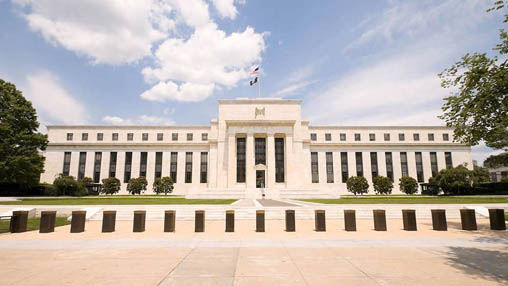
Earn cash back
after close!
With Home Connect, you could earn $350 to $9,500 cash back after close.
There’s a lot of talk lately about how the U.S. Federal Reserve (The Fed) has begun “tapering.” For those of you who don't make a living trading stocks or crafting economic forecasts, this concept may sound about as clear as a foggy London eve. But fear not — We’ll break this financial recipe down for you into its basic ingredients.
While performing its job to enact monetary policy, the Fed has one main goal composed of two constantly competing elements: 1.) increase employment and foster economic growth, and 2.) keep inflation/prices of goods and services in check.
In the center of the rope in this game of tug-of-war lies interest rates, being pulled in opposite directions as each objective pulls to further its cause.
Lower rates: encourage an increase in employment/economic growth
Higher rates: slow down inflation (the downside: employment/growth can slow down as a result)
Full Throttle Ahead For Nearly Two Years Straight
The Fed has been full throttle in its effort to stimulate the economy since March 2020, after the coronavirus pandemic threw a very large wrench into economic activity worldwide. To help get everything up and running again, the Fed has taken on an expansionary monetary policy to increase the money supply and encourage low rates. In short, low rates and a larger money supply make it easier for folks and businesses to borrow money at low cost (which then helps encourage growth and new employment).
What the Fed can do to try to lower interest rates:
- Lower the federal funds rate (aka, the target benchmark rate), which is the rate at which banks can borrow money from one another — The lower this rate is, the lower the rate any lender can offer for a loan.
- Buy government bonds/securities — This increases the money supply and in turn, increases the amount banks can lend out to anyone.
- Reduce bank reserve requirements — This frees up more cash which banks can then lend to borrowers.
It’s Time For a Pit Stop (They’re Waving Us In…)
Imagine the Fed as a Formula One driver — It’s been speeding ahead, pedal to the metal on an economic straightaway for nearly two years. But with inflation increasing as of late and employment up, our driver will need to slow down for a pit stop pretty soon so the vehicle (our economy), doesn’t “blow up” or have a serious malfunction from so much hard acceleration without a break.
In the terms of our perpetual tug-of-war on the fate of interest rates, the force on the other side of the rope, weakened for nearly two years, has finally begun to firm up its grip and dig in its heels. We now have to gear up for the eventual pull in the opposite direction.
What the Fed can do to try to cut down on inflation (basically, the exact opposite of the ways they try to lower rates):
- Gradually slow down the buying of bonds/securities — This gradual slow down is the reference to “tapering” everyone’s been talking about. It’s the first step the Fed takes before it progresses to the next move on this list.
- Raise the federal funds rate — The higher this goes, the higher the lowest rate any lender can offer to borrowers.
- Increase bank reserve requirements — This reduces the amount of money banks have on hand to lend out.
Tapering (per Merriam Webster): to diminish gradually
Tapering is the first sign that we’re heading towards a pit stop, slowly easing off of the pedal of extremely low interest rates. The result will be rates returning to somewhat “normal” levels, as opposed to the astonishing record-breaking lows we’ve seen for the past couple of years.
Are We Simply Returning to "Normal" Interest Rates?
What many of us might not recall is the ultra-low rate environment we’ve been in as of late is historically anything but normal.
Consider the example that in the week of Nov. 15, 2018, the average 30-year fixed-rate mortgage (FRM) was 4.94%. It wasn’t until March of 2020 that rates dropped to the dramatic lows we’ve had since then, dropping to the lowest in 50 years in early January, 2021 at 2.65% (according to Freddie Mac). It’s difficult to know if we will ever see such low rates again.
And let’s not forget that back in 1981 when inflation was raging at comparable levels to today’s, mortgage rates jumped to an astounding high of 18.45%. We can all thank our lucky stars that’s not in the forecast for anytime soon.
What Can We Expect For Rates in the Coming Years?
As of this moment, the Fed is expected to raise the federal funds rate possibly up to four times this year. This leads us to suggest that if anyone has been wondering whether they should wait for a lower rate to refinance or purchase a new home, the current answer appears to be "no". Considering that rates are projected to slowly creep up this year, it's most likely best not to wait any longer if you can manage it. Of course, with an ongoing pandemic and the natural unknown nature of the future, there’s no such thing as a sure bet when it comes to interest rates or the actions the Fed will take
Whatever the Fed does ultimately do, we can rest assured that it’s their obligation to continue to work towards a strong economy, which will always include ways for folks to accomplish homeownership. So while the constant tug-of-war on rates presses on, we can hang on tight and take advantage of the most favorable rates at the times in our lives when it matters the most.
If you’d like to learn about your purchase or refinance options before rates go up, we have experts who can walk you through your best plan of action. Explore your options with a dedicated Pennymac loan officer to make the most informed decision.
Refinancing your existing loan may result in your total finance charges being higher over the life of your loan.
Share
Categories



